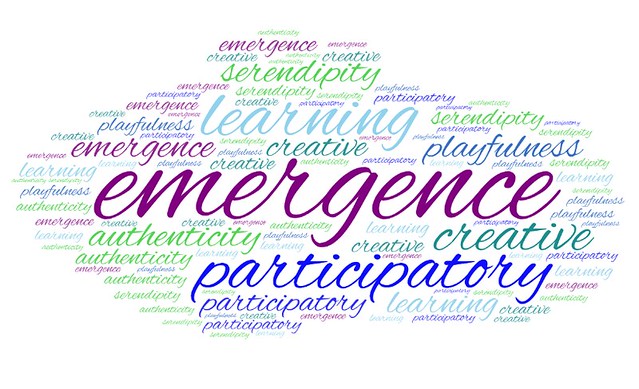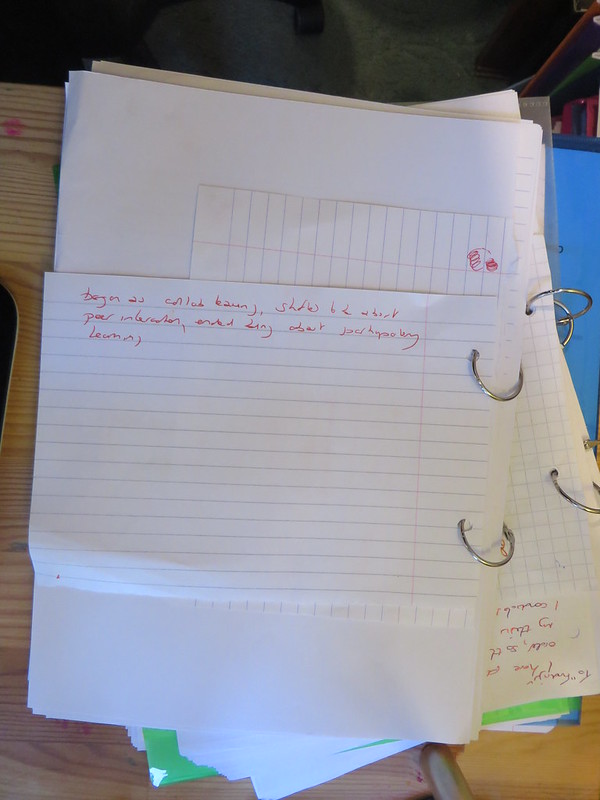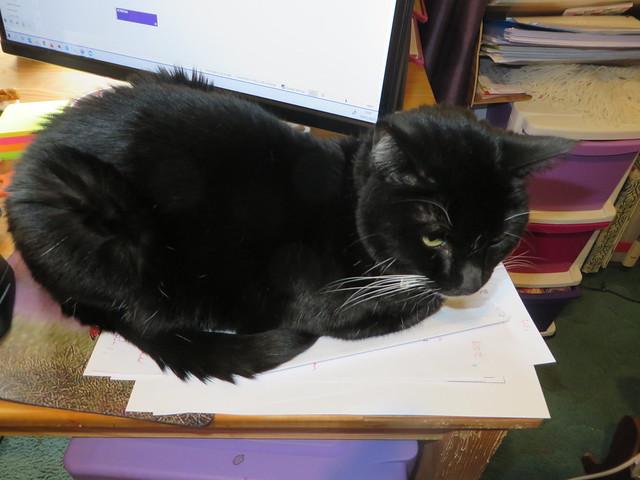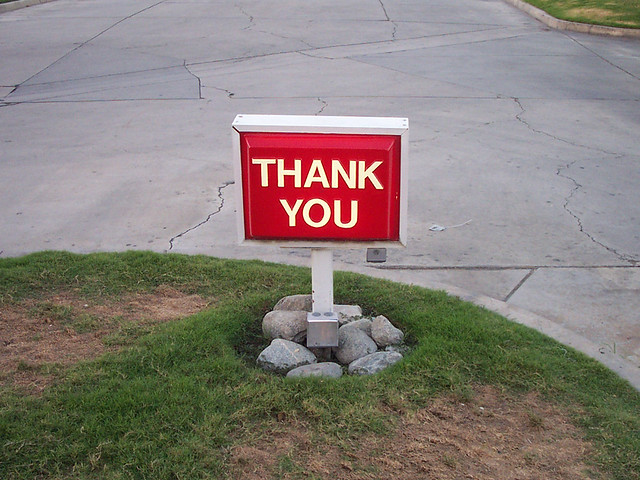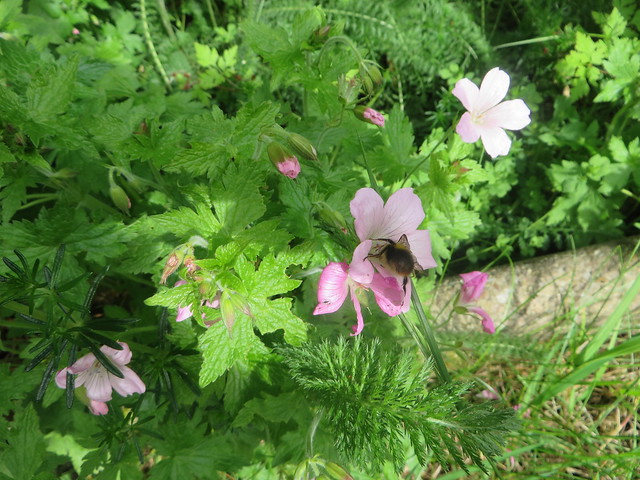I submitted a draft of my PhD discussion chapter yesterday. It’s over 7,000 words, so I won’t post it all here! I can never remember the actual title of my thesis – but I am looking broadly about how peer interaction helps to support learning, and I am using CLMOOC (and a bit of DS106) to think about the question. My draft thesis statement at the moment is this:
CLMOOC is best conceptualised as being an affinity space, or affinity network, in which the principles and values of connected learning support and facilitate a participatory culture of lifelong learners who engage in reciprocal and collaborative practices such as remix. This ethos of creative playfulness leads to meaningful learning because members of CLMOOC perceive themselves to be in a safe space where they can experiment and learn new skills without fear of ridicule or censure, and can ask openly for help and advice as they need it. Much of the learning that occurs in CLMOOC is emergent and thus unplanned in one sense, and the structure and ethos of CLMOOC are carefully designed so that they support and facilitate this emergent learning. However, although this structure is carefully designed, this design is not immediately obvious.
I’ve done various types of analysis – some social network analysis (using TAGS), and a textual analysis of some CLMOOC tweets. To do this, I focused on the 2016 summer pop-up, as looking at the 40K tweets I have in my TAGS database would have taken me years. My summary of that analysis is this:
CLMOOC is a highly connected, non-hierarchical community of lifelong learners with an ethos of social justice who support each other and learn through creative play. In summary, CLMOOC has the following features:
- Connected community: the social network visualisations in particular show that CLMOOC is a highly connected community of learners, and the thematic analysis shows that many members feel a sense of belonging and being connected to each other;
- Communicative conversations: the content analysis shows that many of the conversations in CLMOOC are more than just informal chit-chat. They are:
- highly cognitive and meta-cognitive: members talk about teaching and learning and consider how to apply what they are learning to their own teaching practices;
- highly social and supportive: members praise each other, are not afraid to show their feelings for each other and their appreciation for what others are doing;
- Creative and collaborative: the thematic analysis shows that CLMOOC is a maker space where participants engage in reciprocal creative play and that this leads to serendipitous and surprising happenings and emergent learning.
I am calling CLMOOC an affinity space, or affinity network, based on my reading of writings by James Paul Gee and Mimi Ito (especially the book some of us recently read together), and characterising the interactions that we engage in as HOMAGO. In order to explain this, I’m adding some examples of the sorts of collaborative and reciprocal activities we play around with. I’m also adding pictures to make it look pretty (all CLMOOC designed with CC licences, of course. At the moment my examples are:
- Off the cuff play: I’ve used our giffing around as an example here,
- Volunteer suggestion: I’ve used the badges from CLMOOC 2016, and Ron’s artwork,
- Shared practice: I thought Silent Sunday would be good here. with a collage of a few pf the pictures,
- Collaborative: I’ve chosen Story Jumpers for this, with a pic of Miss Direction,
- Transcending the virtual: well, the postcards have to be mentioned, don’t they? I have a pic of my pin board to illustrate this,
- I have not added this yet, but I will write something aboutdaily rituals – either the daily creates from DS106, or the daily doodles some of us have been drawing.
I’m also suggesting that the broad values we subscribe to are those of connected learning: that is, learning that is socially connected, interest-driven, and oriented towards educational opportunity.
In the next section, I’m going to look at the design of CLMOOC, using papers written by Anna, Christina, Mia and Stephanie as a starting point.
So what do you think? Does this sound like CLMOOC to you? What have I missed out? What would you want me to say about CLMOOC?


